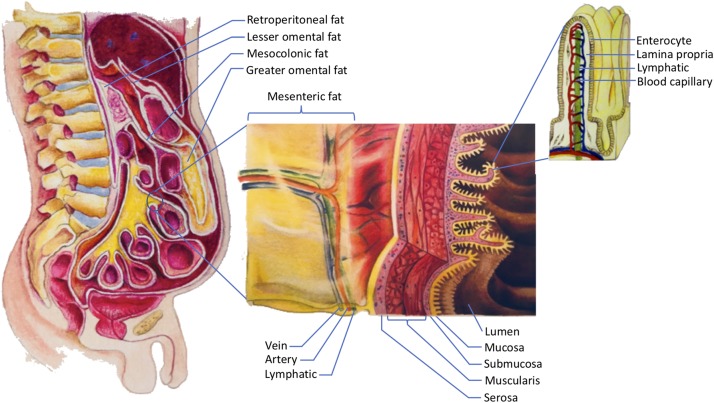FIGURE 1.
The storage of dietary triglycerides by abdominal visceral fat. Dietary triglycerides are digested and taken up by the enterocytes that line the intestinal lumen. The enterocytes secrete the dietary triglycerides in the form of VLDLs and chylomicrons to the lamina propria. Within the lamina propria, there are numerous blood capillaries (red/blue) and lymphatic capillaries (green). Due to their smaller size, some of the VLDLs can readily enter the lumen of the blood capillaries. In contrast, chylomicrons that are produced more by males are more likely to be retained in the lamina propria as they attempt to gain access to the lumen of the lymphatics. The higher retention of chylomicrons in the lamina propria predisposes their triglycerides to LPL hydrolysis. The liberated fatty acids, which are the products of LPL hydrolysis, can then be delivered to the abdominal visceral adipocytes that are located within the retroperitoneum and mesenteries. The fat that lies within the retroperitoneum is called retroperitoneal fat, and the fat in the mesenteries is known as intraperitoneal fat. The intraperitoneal fat depots shown here are mesocolonic, lesser omental, greater omental, and mesenteric fat. Note that the liberated fatty acids supply the abdominal visceral adipocytes prior to the subcutaneous adipocytes. VLDL = very low density lipoprotein; LPL = lipoprotein lipase.

